Abstract
The vocal behavior of three Cebus monkeys was maintained by fixed-ratio schedules of response dependent reinforcement at values between fixed-ratio 1 and fixed-ratio 15. In one monkey that was exposed to variable-interval, fixed-interval, and conjunctive fixed-ratio fixed-interval schedules of reinforcement, vocal responding occurred at a low rate, but schedule-appropriate patterns were maintained. The rates and patterns of responding engendered indicated that the vocal operant can be brought under schedule control in the monkey by the use of response-dependent reinforcement.
Full text
PDF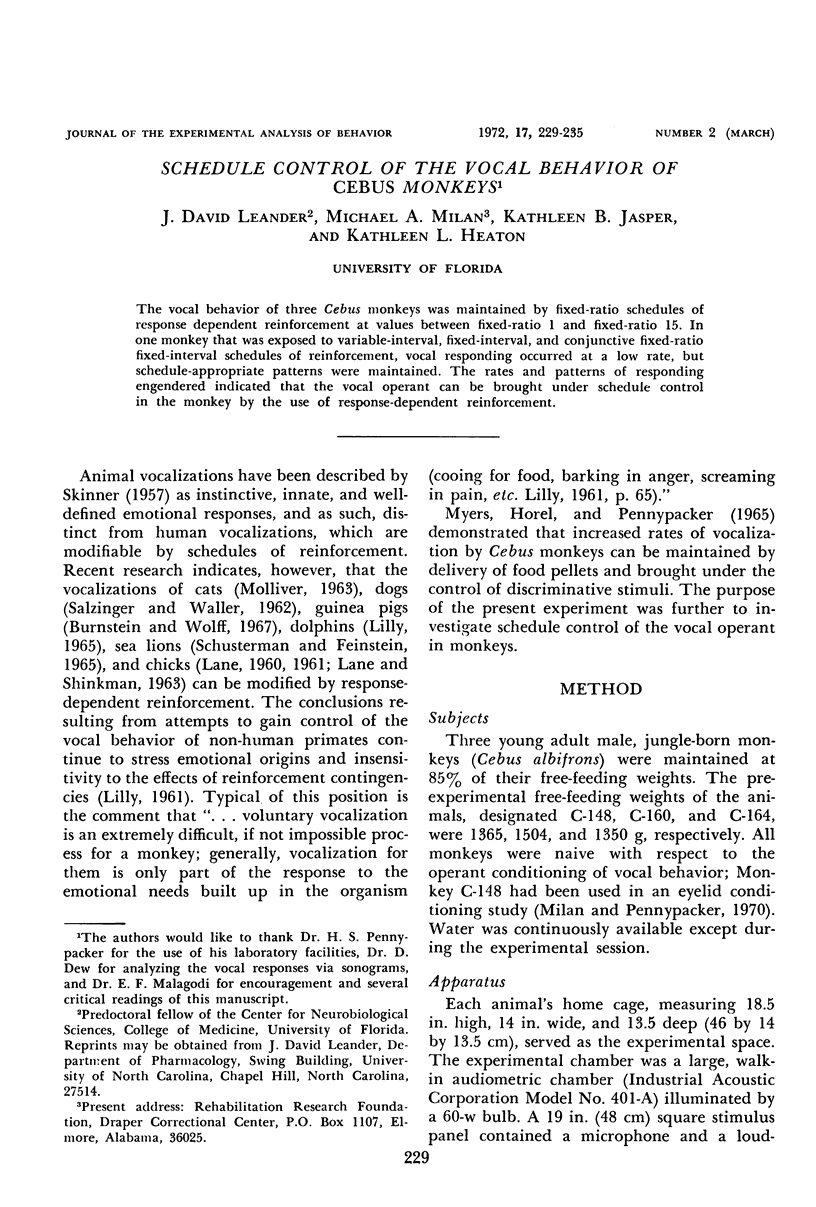
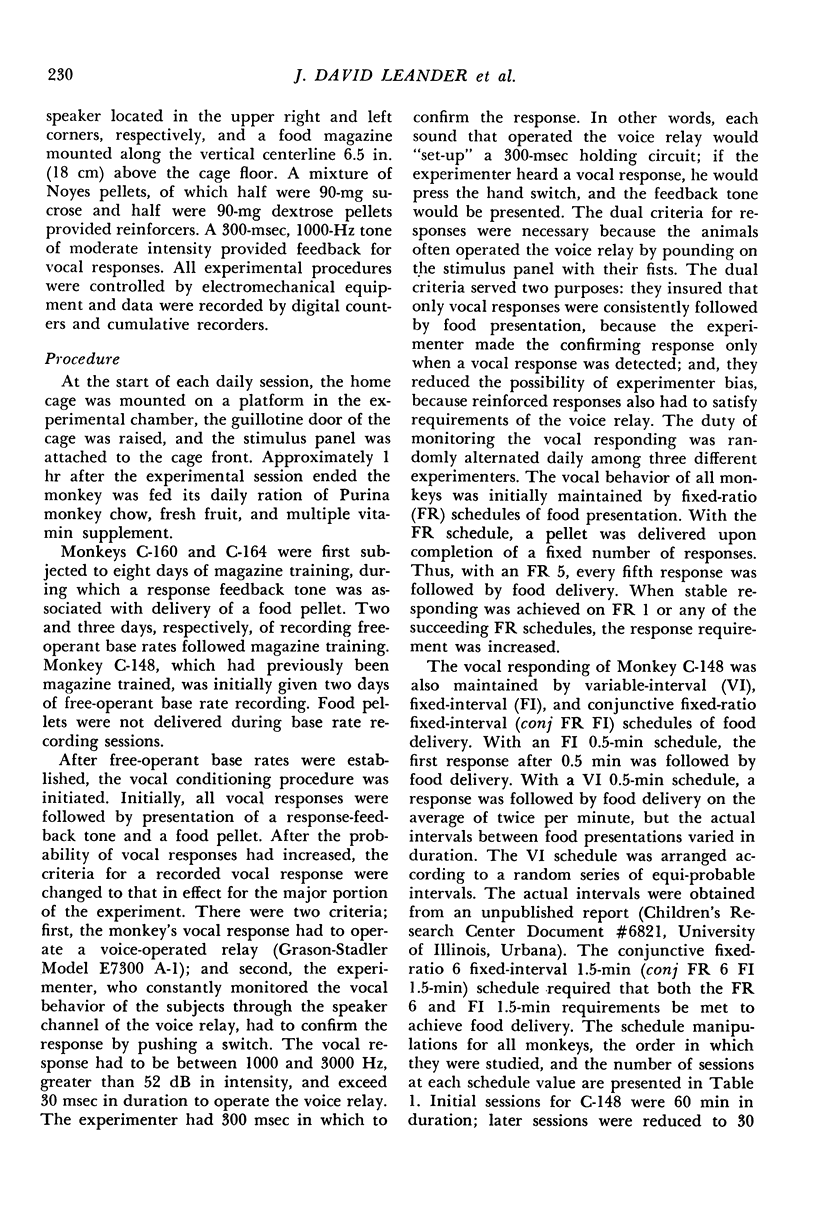
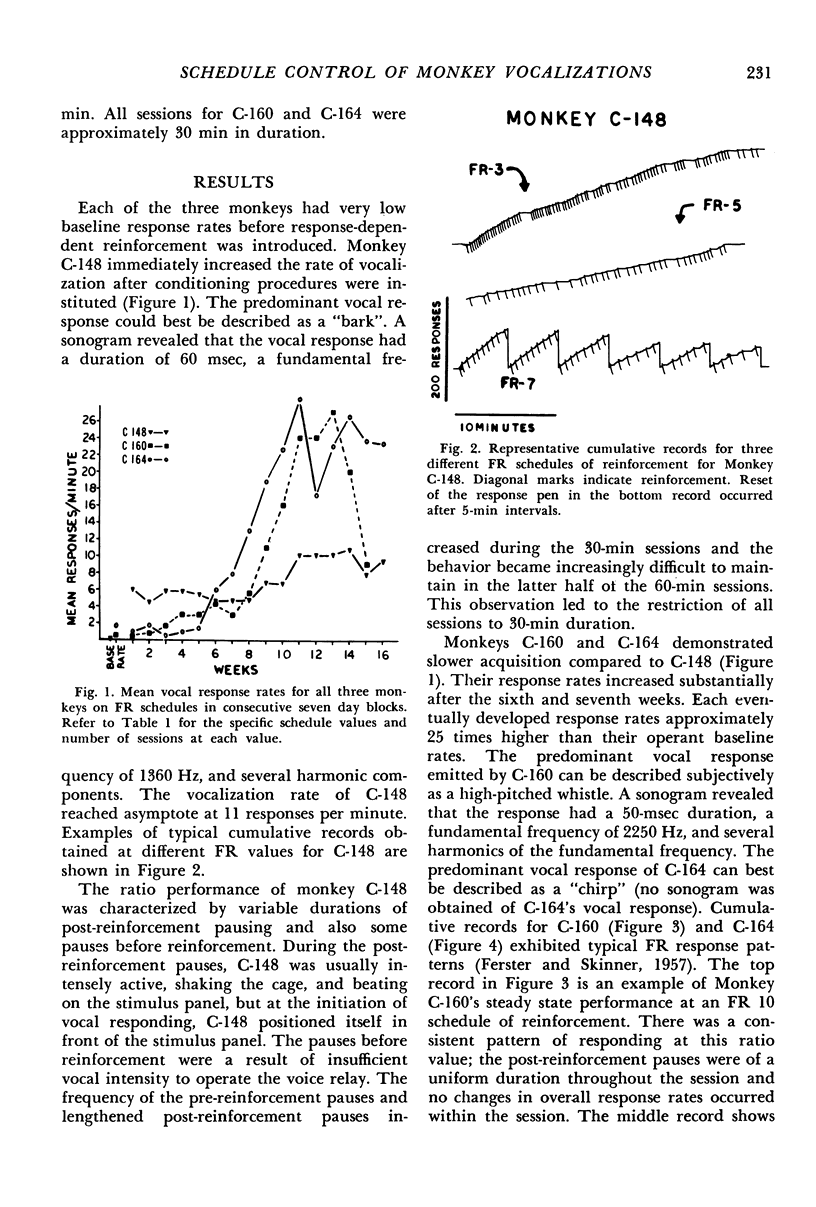
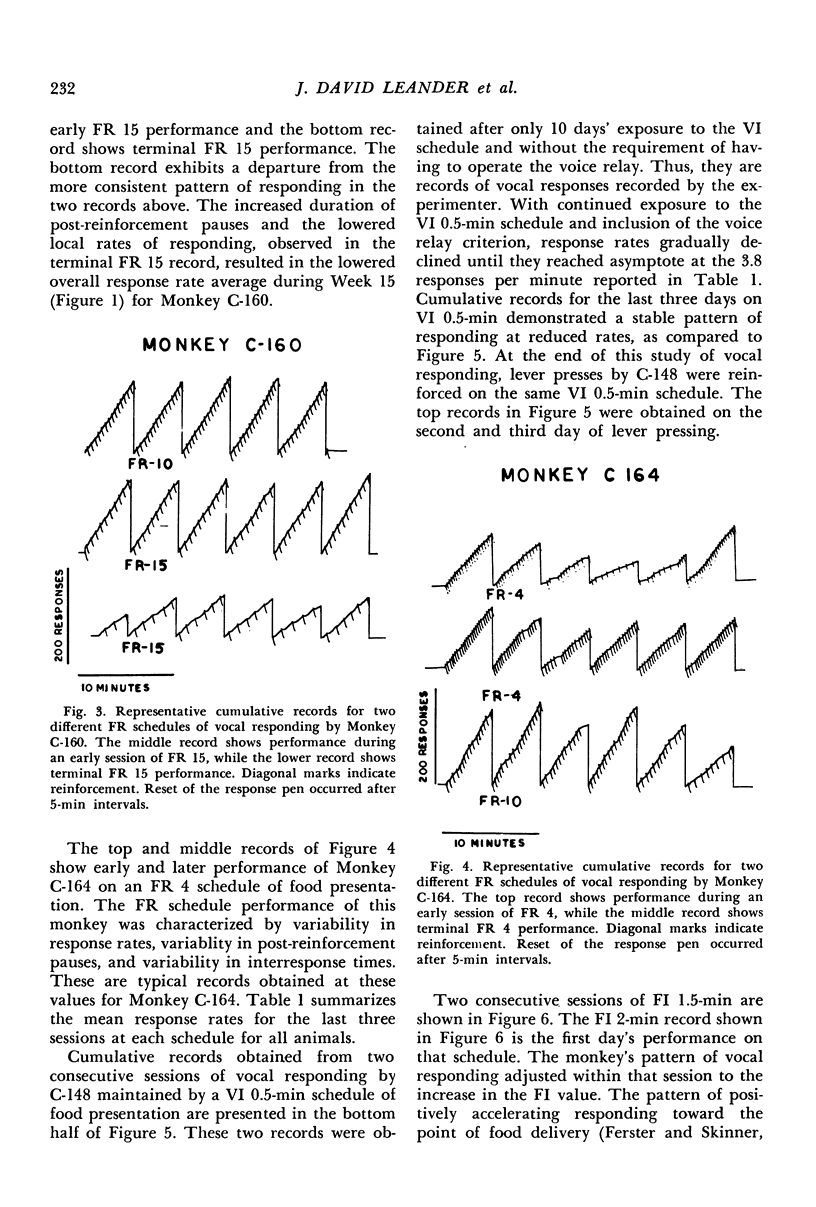
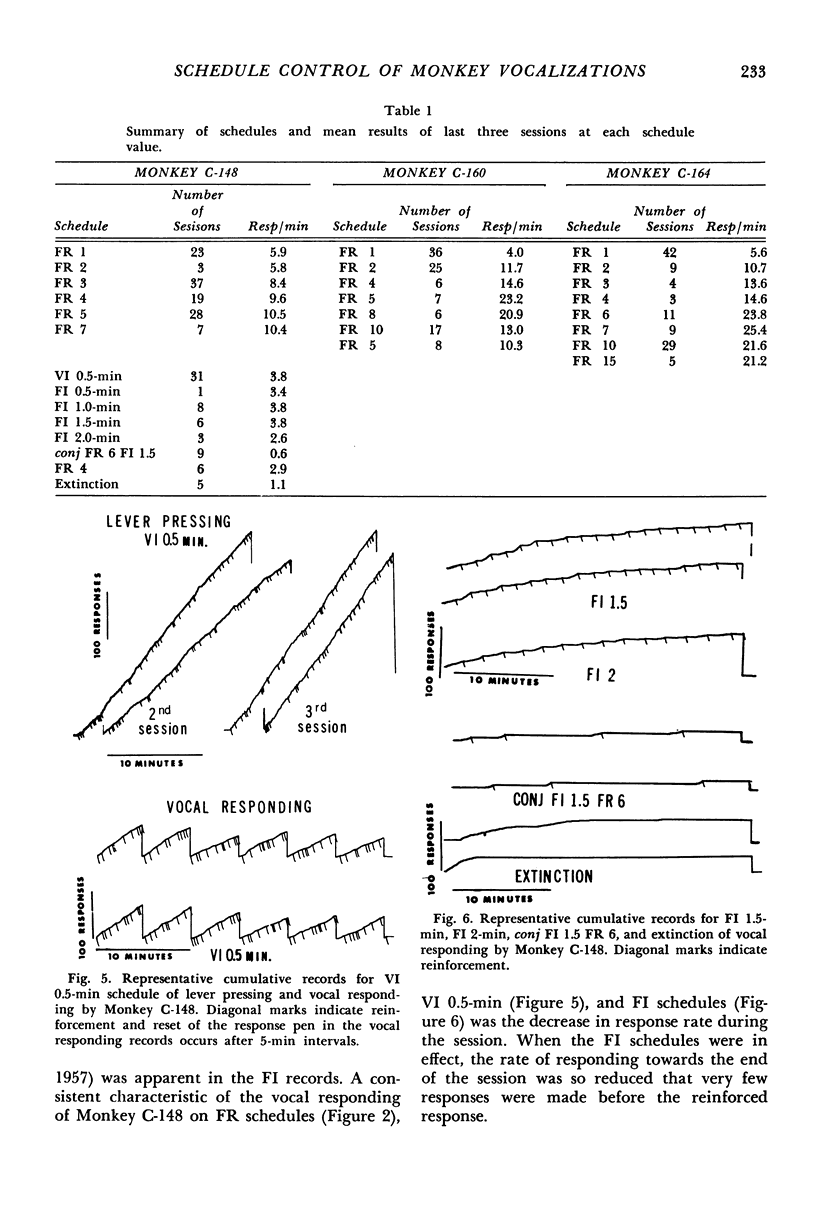
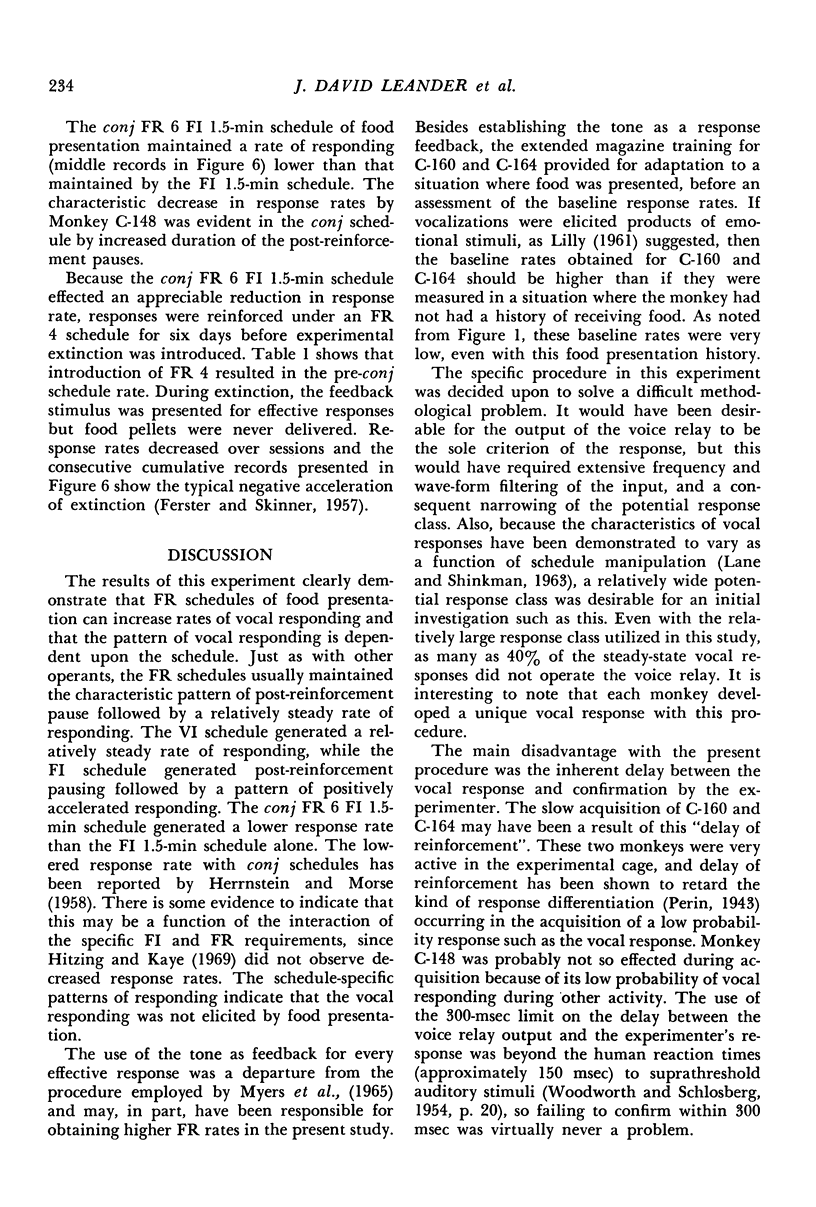
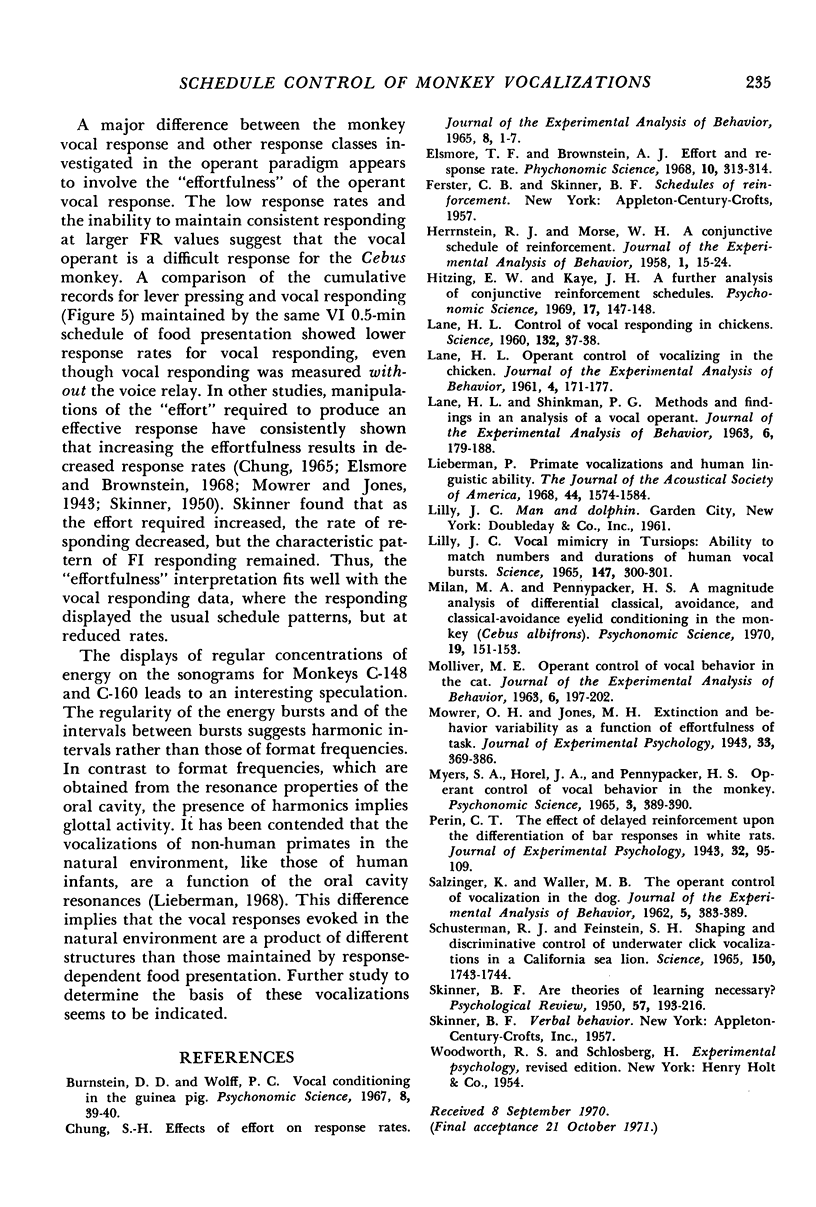
Selected References
These references are in PubMed. This may not be the complete list of references from this article.
- CHUNG S. H. EFFECTS OF EFFORT ON RESPONSE RATE. J Exp Anal Behav. 1965 Jan;8:1–7. doi: 10.1901/jeab.1965.8-1. [DOI] [PMC free article] [PubMed] [Google Scholar]
- HERRNSTEIN R. J., MORSE W. H. A conjunctive schedule of reinforcement. J Exp Anal Behav. 1958 Jan;1:15–24. doi: 10.1901/jeab.1958.1-15. [DOI] [PMC free article] [PubMed] [Google Scholar]
- LANE H. L., SHINKMAN P. G. Methods and findings in an analysis of a vocal operant. J Exp Anal Behav. 1963 Apr;6:179–188. doi: 10.1901/jeab.1963.6-179. [DOI] [PMC free article] [PubMed] [Google Scholar]
- LANE H. Control of vocal responding in chickens. Science. 1960 Jul 1;132(3418):37–38. doi: 10.1126/science.132.3418.37. [DOI] [PubMed] [Google Scholar]
- LANE H. Operant control of vocalizing in the chicken. J Exp Anal Behav. 1961 Apr;4:171–177. doi: 10.1901/jeab.1961.4-171. [DOI] [PMC free article] [PubMed] [Google Scholar]
- Lieberman P. Primate vocalizations and human linguistic ability. J Acoust Soc Am. 1968 Dec;44(6):1574–1584. doi: 10.1121/1.1911299. [DOI] [PubMed] [Google Scholar]
- Lilly J. C. Vocal Mimicry in Tursiops: Ability to Match Numbers and Durations of Human Vocal Bursts. Science. 1965 Jan 15;147(3655):300–301. doi: 10.1126/science.147.3655.300. [DOI] [PubMed] [Google Scholar]
- MOLLIVER M. E. Operant control of vocal behavior in the cat. J Exp Anal Behav. 1963 Apr;6:197–202. doi: 10.1901/jeab.1963.6-197. [DOI] [PMC free article] [PubMed] [Google Scholar]
- SALZINGER K., WALLER M. B. The operant control of vocalization in the dog. J Exp Anal Behav. 1962 Jul;5:383–389. doi: 10.1901/jeab.1962.5-383. [DOI] [PMC free article] [PubMed] [Google Scholar]
- SKINNER B. F. Are theories of learning necessary? Psychol Rev. 1950 Jul;57(4):193–216. doi: 10.1037/h0054367. [DOI] [PubMed] [Google Scholar]
- Schusterman R. J., Feinstein S. H. Shaping and discriminative control of underwater click vocalizations in a California Sea Lion. Science. 1965 Dec 24;150(3704):1743–1744. doi: 10.1126/science.150.3704.1743. [DOI] [PubMed] [Google Scholar]


